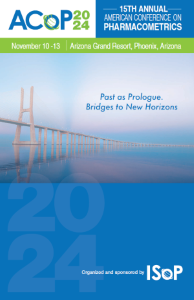Browse by Poster Presenter
- D
-
Dalton, MackenzieClarkson University
-
Davenport, AngelicaGenmab
-
D'Cunha, RonildaAbbVie
-
de Jong, JanImmuneering Corporation
-
De Witte, WilhelmusESQlabs
-
Debroy, SwatiCertara
-
Dela, AnSimulations Plus
-
Delff, PhilipVertex Pharmaceuticals
-
Demin Jr, OlegInSysBio CY
-
Denney, William SHuman Predictions
-
Desai, DevamCenter of Pharmacometrics and Systems Pharmacology, University of Florida, Orlando, FL
-
Dhakal, SarojSanofi
-
DiBartolo, Sarah
-
Djebli, NassimLuzsana Biotechnology
-
Dodds, MichaelCertara USA, Inc
-
Dogra, PrashantHouston Methodist Research Institute
-
Doi, YoheiFaculty of Pharmaceutical Sciences, Kyushu Univercity, Fukuoka, Japan
-
Dombrowsky, ErinBristol Myers Squibb
-
Dong, JinAstraZeneca
-
Dotan, OrTeva Pharmaceuticals, Ltd.
-
Drescher, StefaniePfizer INC
-
Duffull, StephenCertara
-
Du, LihongMerck & Co., Inc.,
-
Duong, Khanh LinhChungnam National Univesity
-
Du, RuihuDrug Clinical Trial Center, Peking University Third Hospital, Beijing, 100191, China
-
du, ShengnanBMS

